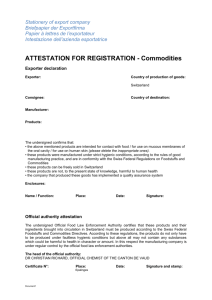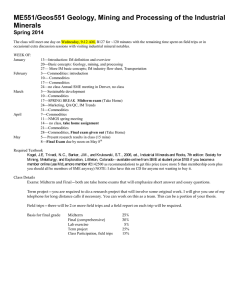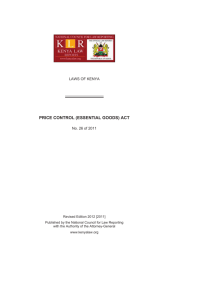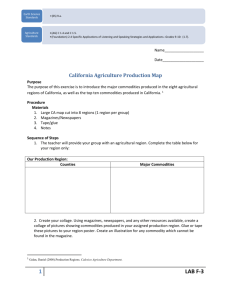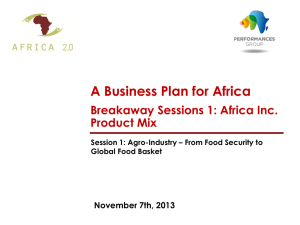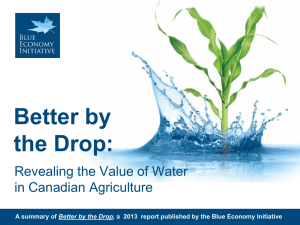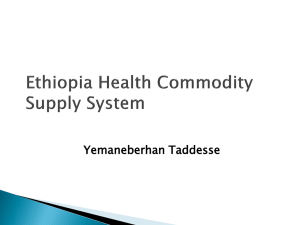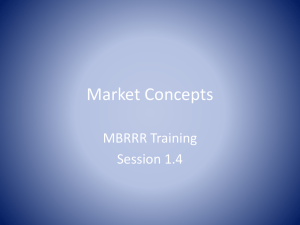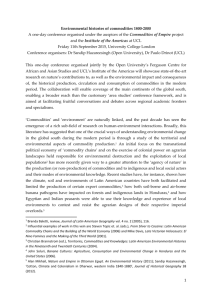trade_marketing_fs
advertisement
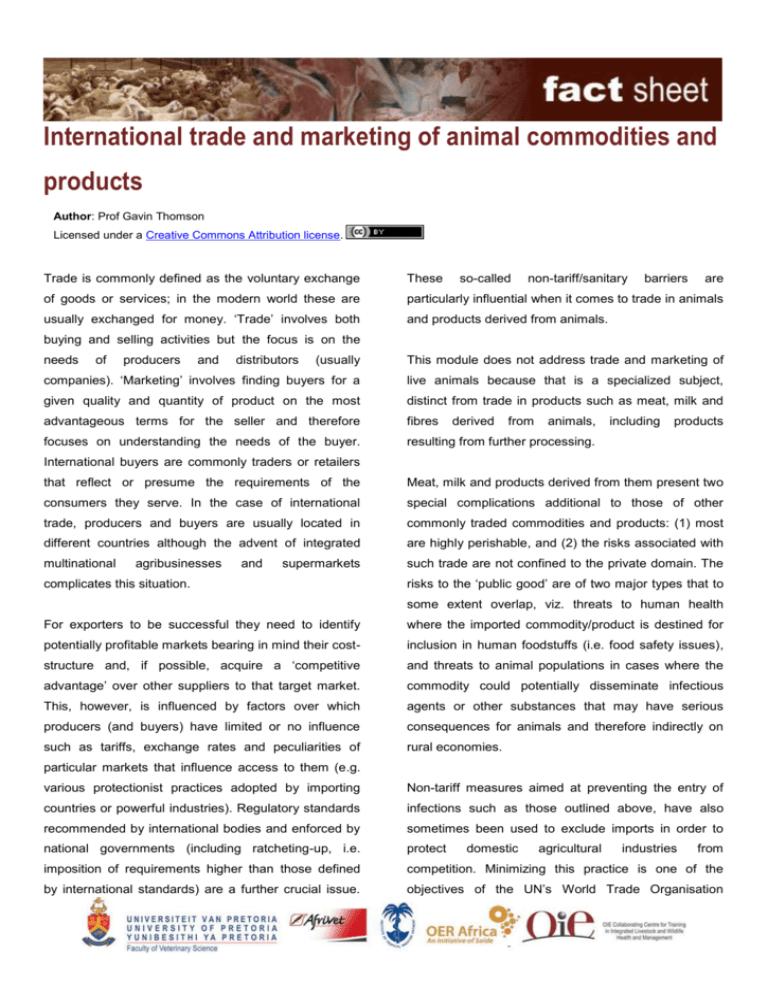
International trade and marketing of animal commodities and products Author: Prof Gavin Thomson Licensed under a Creative Commons Attribution license. Trade is commonly defined as the voluntary exchange These so-called non-tariff/sanitary barriers are of goods or services; in the modern world these are particularly influential when it comes to trade in animals usually exchanged for money. ‘Trade’ involves both and products derived from animals. buying and selling activities but the focus is on the needs of producers and distributors (usually This module does not address trade and marketing of companies). ‘Marketing’ involves finding buyers for a live animals because that is a specialized subject, given quality and quantity of product on the most distinct from trade in products such as meat, milk and advantageous terms for the seller and therefore fibres focuses on understanding the needs of the buyer. resulting from further processing. derived from animals, including products International buyers are commonly traders or retailers that reflect or presume the requirements of the Meat, milk and products derived from them present two consumers they serve. In the case of international special complications additional to those of other trade, producers and buyers are usually located in commonly traded commodities and products: (1) most different countries although the advent of integrated are highly perishable, and (2) the risks associated with multinational such trade are not confined to the private domain. The agribusinesses and supermarkets complicates this situation. risks to the ‘public good’ are of two major types that to some extent overlap, viz. threats to human health For exporters to be successful they need to identify where the imported commodity/product is destined for potentially profitable markets bearing in mind their cost- inclusion in human foodstuffs (i.e. food safety issues), structure and, if possible, acquire a ‘competitive and threats to animal populations in cases where the advantage’ over other suppliers to that target market. commodity could potentially disseminate infectious This, however, is influenced by factors over which agents or other substances that may have serious producers (and buyers) have limited or no influence consequences for animals and therefore indirectly on such as tariffs, exchange rates and peculiarities of rural economies. particular markets that influence access to them (e.g. various protectionist practices adopted by importing Non-tariff measures aimed at preventing the entry of countries or powerful industries). Regulatory standards infections such as those outlined above, have also recommended by international bodies and enforced by sometimes been used to exclude imports in order to national governments (including ratcheting-up, i.e. protect imposition of requirements higher than those defined competition. Minimizing this practice is one of the by international standards) are a further crucial issue. objectives of the UN’s World Trade Organisation domestic agricultural industries from (WTO) which tries to ensure that trade is as ‘free’ as possible. This is a particularly serious issue for the sub- Assuring the biological safety of animal production Saharan African Region because many transboundary (value) chains animal diseases (TADs) occur in the region; a larger Traceability requirements for foodstuffs derived from number are endemic to sub-Saharan Africa than in any other region of the world. Countries in sub-Saharan Africa therefore have greater difficulty in overcoming non-tariff barriers and thereby accessing international and even regional markets for animal commodities than other developing regions of the world, i.e. even where import tariffs are not a constraining factor. Module content This module outlines and attempts to contextualize issues related to international trade in commodities and products derived from animals as well as presenting ways by which current threats and opportunities – with an emphasis on southern Africa – could be better managed. It is divided into the following topics: General issues associated with international trade Overview of international agricultural trade and marketing Economic issues associated with international trade Understanding markets and market opportunities Livestock product supply chains, marketing channels and the issue of competitiveness. Standards and norms associated with international trade in animal commodities and products International standard setting bodies and the relationship between public and private standards Identification, measurement and management of risk associated with trade in animal commodities and products Methodologies for assuring the biological safety of animal production (value) chains Challenges for developing countries in meeting sanitary and phyto-sanitary (SPS) standards Special issues related to trade in wildlife and products derived from wildlife. animals Integration of food safety and animal disease risk management Auditing and certification in support of trade in commodities and products derived from animals.

